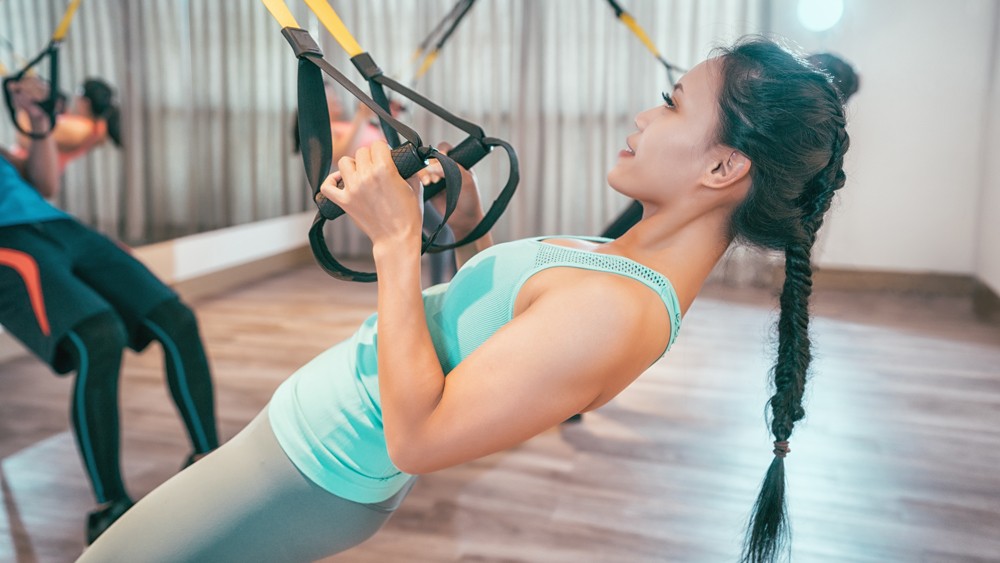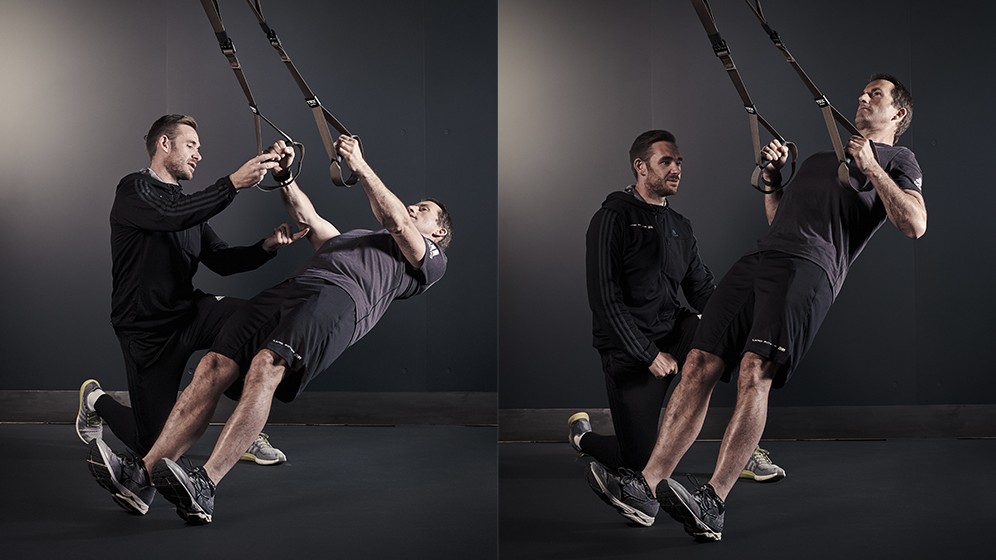How To Do The TRX Row
Use a suspension trainer for the inverted row to ramp up the core benefits

The inverted row is a great back exercise, working the lats as well as several stabiliser muscles, and acting as a natural complement to chest-focused moves like press-ups and the bench press. It’s also a great pulling exercise that will help you build the strength needed to rattle out a set of pull-ups, if that’s something you’re working towards.
If you choose to do your inverted rows on a suspension trainer like the TRX, then you get all of the above and more, because the instability involved in pulling your body up using ropes rather than a bar means that your core has to work harder throughout the exercise to maintain your body position.
How To Do The TRX Row

Set up your suspension trainer so the handles hang at chest height. Stand with your feet hip-width apart, holding the handles with your palms facing each other. Lean back until your arms are extended, taking your weight. The position of your feet will determine how difficult the exercise is: moving them forwards towards or even past the anchor point increases how much you lean back and makes the move harder, and stepping backwards makes it easier.
Pull your chest up between your hands, keeping your elbows close to your body and squeezing your shoulder blades together behind you. Pause at the top of the move, then slowly lower until your arms are extended again.
See related
- The Best Suspension Trainers Of 2021: TRX, Decathlon And More
- The Beginner’s Guide To TRX Training
- The Best TRX Exercises
Throughout the exercise it’s imperative to maintain your body position. You should form a straight line from your head to your heels, and only your arms and shoulders should move as you pull yourself up and lower again. Given the unstable nature of the suspension trainer, staying in position will be particularly taxing for your core muscles.
There are three common mistakes to avoid with this move. The first is jabbing your chin out towards the handles rather than lifting your chest to it. The second is letting your hips sag, which is usually an indication that you need to make the move easier by bringing your feet back a little. Finally, thrusting your hips forwards as you row up. Swerve all these and you’ll get a brawnier back and stronger core in double-quick time.
Get the Coach Newsletter
Sign up for workout ideas, training advice, reviews of the latest gear and more.

Nick Harris-Fry is a journalist who has been covering health and fitness since 2015. Nick is an avid runner, covering 70-110km a week, which gives him ample opportunity to test a wide range of running shoes and running gear. He is also the chief tester for fitness trackers and running watches, treadmills and exercise bikes, and workout headphones.









